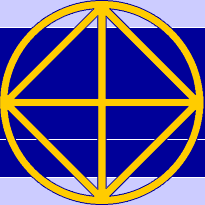Book Presentation
Occult Healing – Volume 1
by Dr. K. Parvathi Kumar

Healing is seen as an act of balancing the life force to its normalcy, whenever it is disturbed either from inside or outside. Doctors and healers need to study and understand the natural causes of imbalance before they treat.
The book "Occult Healing" is based on a continuation of articles written by Dr. K. Parvathi Kumar for the magazine "Paracelsus Health & Healing". In this first volume he introduces different approaches to healing and explains in detail how one can reach deeper dimensions by observing inhalation and exhalation.
Dhanishta, Visakhapatnam, India 2019
Sample:
4. Rhythm and HealingIt is a well-known fact that man carries health, sickness and healing powers within him. He can promote health or sickness for himself by his understanding of life and can even heal himself invoking the healing energies in him. This knowledge needs to be given back to man. By this, man prevents falling sick frequently. In fact, an Eastern scripture, Bhagavatha, says that there is no sickness that cannot be cured by right attitude towards food. The food is the source of sickness, source of health and is also a source of healing. Food is but one part. Comprehensive planning of daily life is the other, but more important part.
The daily routine can be gradually brought to rhythm. Rhythm generates hidden energies, which in turn can harmonise and stabilise health. Timing is suggested towards daily activity of life, which brings in the rhythm. Man needs to specify timings to
(i) different types of work
(ii) thinking
(iii) study
(iv) food
(v) pastime and
(vi) intermittent rests and sleep.
Man needs to set timings as per his life conditions and follow what he sets for himself. This needs a little exertion but when followed it brings in a gradual change in his inner faculties. It gives him a better power of discrimination. Thereby he begins to respond instead of reacting emotionally to his environment. Discrimination enables power to work from within in contrast to surficial reactions. Response to pain and pleasure, likes and dislikes, comfort and discomfort will grow more passive, while the inner consciousness grows more active. This response is the activity of the vital and mental planes and is not mere physical plain reactions.
Man today lives in terms of other’s thoughts, opinions and obligations. Following the set rhythm he establishes himself in consciousness and realises what his work and his obligations are to the surroundings. The interaction with the surrounding becomes gentle and subtle and not any more rough and crude. Gradually the angularities are rounded off and his surficial behaviour gets polished. Further working with the rhythm strengthens the consciousness and, as consequence, he begins to work silently without any friction with the objective world. He honours the feelings of others while keeping firmly to his own principles. He realises that principles are a means to his ends. He understands the vainness of upholding a principle for its own sake. He shuns criticism and learns not to criticise those who criticise him. All this is due to emergence of inner consciousness, which is the result of following a rhythm.
The attitude of the student of rhythm to others, changes gradually to listen to what others need and not to what others speak. What others speak is confusing and what they need is help. As much as one responds to the needs, bridges of goodwill are built into the society. There is a gradual change in his thinking, which is brought about by the rhythm. The student of rhythm learns to think from other man’s viewpoint without deviating from the path. Understanding grows better in him and belief system takes to back seat. Belief is the supporting system in the absence of understanding. As the latter grows, the former is relegated to the background.
Rhythmic life may not be seen as monastic living. It should be seen as a conscious social living. It does not demand austere practices. Physical comforts are not denied in rhythmic living. The body should be nourished with proper food, which is also delicious. Shunning taste, beauty and harmony is strictly prohibited. Self-torture of any kind is not to be thought of. Habits of extreme orthodoxy or heterodoxy are avoided. Man’s rhythm should also remain flexible not to clash with the routine of others. His food should be more qualitative and less quantitative. Liquids purify the physical body and hence it is recommended to take more nourishing liquid food and less solid food. Very rich foods and sumptuous night dinners should be avoided.
Pungent and very spicy foods cause hindrances on physical plane health. They produce acids, gases and not infrequently cause indigestion and the consequent ills. They also produce more than the required activity of prana and of mind. They make the nervous system oversensitive. Food should be planned in such a manner that it is nourishing, tasty, easily digested and assimilated. Easy digestion and assimilation is possible with vegetarian food. Since plants have the faculty of responding more to Sun’s rays than the animals in preparing the food, they develop the response of the human body to the solar principle easily. One should note that today’s food is tomorrow’s mental matter. Every day our physical food nourishes our vital matter, which in turn nourishes the mental matter. The subtler mental matter is nourished by the gross food and the grosser food is managed by the subtle intelligence of mind. Both get managed well through growth of inner consciousness, which results from rhythmic living.
Thus ease on the physical, vital and mental planes takes place. A new glow of health sets in and more energy manifests. The influx of life force is lubricated by this process. The nerves are at ease, the mind is at tranquil and the inner man gains stability. Health remains.

 Circle of Good Will
Circle of Good Will Contact
Contact
